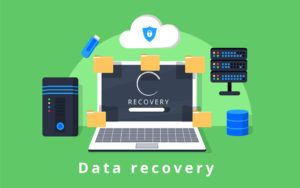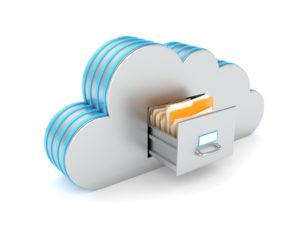Welcome back to the second half of this two-part article about why it’s time to upgrade your archiving system to cloud backups. Last time we talked about why businesses archive and the unfortunate weaknesses of an archived situation. Join us today as we discuss whether or not your company needs backups and what those backups can do for you once your backups are saving regularly to the cloud.
Should You Be Using Backups?
Yes! Everyone with files and computer configurations they don’t want to lose should be creating backups. This is easy to say but more complicated to explain. Backups can come in one of several forms. A backup of your archives, for instance, would take the compressed archives, copy them, then store them on a separate, secure server. The separation needs to be completely outside your original network and ideally on a third party cloud system. If you are backing up a server that is already on the cloud, make sure that the backups are on a separate cloud server that is dedicated to holding backups. This way, nothing you do that could damage or risk the work server could put the backups at risk. Then, just in case all your old files and archives corrupt, you can reload them from the backup with only a few minutes of delay.
However, individual file backups aren’t the only kind and, in fact, aren’t even the most common. The best way to backup is to take a ‘snapshot’ of your entire computer’s configuration and save that into your backup server space. This way, no matter what happens to your computer, you will be able to recover absolutely everything about your workspace, right down to the way icons are arranged on your desktop.
What Backups Prepare For
The full-system backup system keeps you prepared for a large variety of disasters from hurricanes to hackers as long as you know how to run a recovery. The events a strong backup plan can recover from include
- File Corruption
- If for some reason the files on your computer corrupt, you can simply recover them from backup rather than spending days on the dubious process of ‘un-corrupting’ them
- Ransomware
- Should you find yourself ‘getting ransomed’, you can simply wipe the entire computer and restore from backup to be back to work in an hour or two rather than paying the ransom or risking file loss.
- Computer Destruction
- Whether your facility floods, suffers an earthquake, or your toddler spills their entire sippy cup over your system, a full-computer backup can help you quickly set up on a new computer and/or network of computers with minimum delays
- Miscellaneous Malware
- If your computer somehow gets infected with malware or a fleet of malware (as they often run in packs), it can take days to try eradicating the infection. However, with complete backups, you can simply wipe the computer and reinstall.
- Data Recovery
- Usually, a company will only archive information they expect to need later. However, some rare instances require data you didn’t expect to need like old chat logs. A full computer backup will have a copy of these ready and waiting while archiving will not.
Backups are an important part of any modern business because they ensure that no matter what happens, you can get your system back up and running and ready to serve your customers in the shortest possible amount of time. To know what backup solution is right for your business and how to get started, please contact us today! Our data recovery experts would be happy to give you advice and help you set up a complete backup solution.



